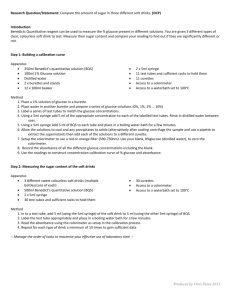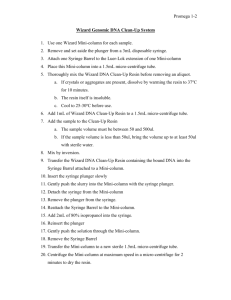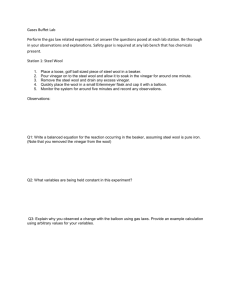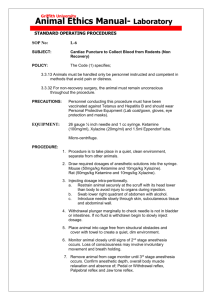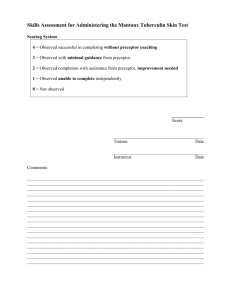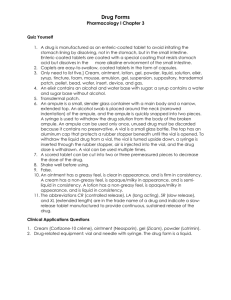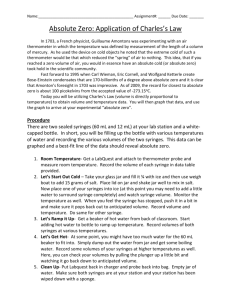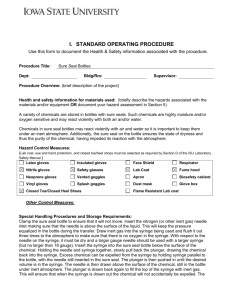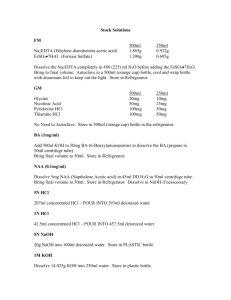DY008 Cruise Report
advertisement
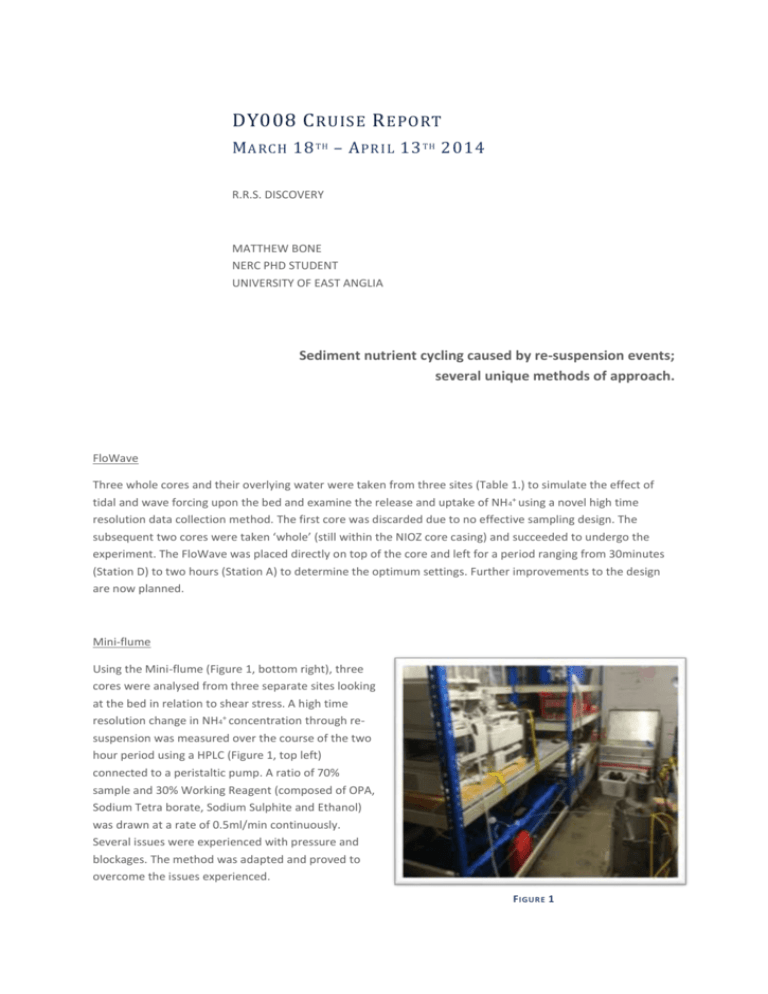
DY008 C RUISE R EPORT M ARCH 18 T H – A PRIL 13 T H 2014 R.R.S. DISCOVERY MATTHEW BONE NERC PHD STUDENT UNIVERSITY OF EAST ANGLIA Sediment nutrient cycling caused by re-suspension events; several unique methods of approach. FloWave Three whole cores and their overlying water were taken from three sites (Table 1.) to simulate the effect of tidal and wave forcing upon the bed and examine the release and uptake of NH 4+ using a novel high time resolution data collection method. The first core was discarded due to no effective sampling design. The subsequent two cores were taken ‘whole’ (still within the NIOZ core casing) and succeeded to undergo the experiment. The FloWave was placed directly on top of the core and left for a period ranging from 30minutes (Station D) to two hours (Station A) to determine the optimum settings. Further improvements to the design are now planned. Mini-flume Using the Mini-flume (Figure 1, bottom right), three cores were analysed from three separate sites looking at the bed in relation to shear stress. A high time resolution change in NH4+ concentration through resuspension was measured over the course of the two hour period using a HPLC (Figure 1, top left) connected to a peristaltic pump. A ratio of 70% sample and 30% Working Reagent (composed of OPA, Sodium Tetra borate, Sodium Sulphite and Ethanol) was drawn at a rate of 0.5ml/min continuously. Several issues were experienced with pressure and blockages. The method was adapted and proved to overcome the issues experienced. F IGURE 1 Incubations Two incubation experiments were carried out (Site A and Site G). It involved taking three 1.5l bottles of bottom water: the first left with only the bottom water, the second: 28cm3 of sediment added, and the third: 28cm3 of sediment added and then spiked with 2ml of ATU. The sediment was taken from a NIOZ core at recorded depths using a syringe sub-corer. The bottles were then incubated at 10oc for a period between 24 – 48hours depending upon transit time between sites. 10ml of water was taken at three hourly intervals from a syringe and then ejected. A second 10ml sample was then taken: 5ml pushed through a 0.45µm syringe filter and discarded, and the final 5ml drawn through the syringe into a 6ml vial. 1ml of this sample was taken and combined with 100µl of Working Reagent in a 1.5ml brown vial. NH4+ was measured at three hour intervals using the HPLC running in discreet mode and compared to standards. Re-suspension experiments Four re-suspension experiments were carried out (one per site). It involved taking three 1.5l bottles of bottom water and adding a set depth of sediment (28cm 3) taken from the core; 10cm, 20cm and 30cm. The sediment was taken from a NIOZ core at recorded depths using a syringe sub-corer. The bottles were placed on a magnetic stirrer for 15 minutes and then incubated at room temperature (20 oc) for a period between 24 – 48hours depending upon transit time between sites; however for the final experiment (Station I), the bottles were incubated at 15oc and air was continuously bubbled through to prevent anoxic conditions from developing. 10ml of water was taken at three hourly intervals from a syringe and then ejected. A second 10ml sample was then taken: 5ml pushed through a 0.45µm syringe filter and discarded, and the final 5ml drawn through the syringe into a 6ml vial. 1ml of this sample was taken and combined with 100µl of Working Reagent in a 1.5ml brown vial. NH4+ was measured at three hour intervals using the HPLC running in discreet mode and compared to standards. 15 N/18O 15ml of sample were taken from the FloWave experiment at 20minute intervals, filtered using a 0.25µm syringe filter and frozen at -80oc for future analysis. T ABLE 1 Station A Station I Station D Station G Date 02/04/14 11/04/14 04/04/14 05/04/14 Sediment Type Mud Muddy Sand Sandy Mud Sand Incubation x3 Re-suspension x3 FloWave 1 Core Mini-flume 1 Core 15N/18O 1 Sample Set x3 x3 1 Core x3 x3 1 Core N/A 1 Core N/A
